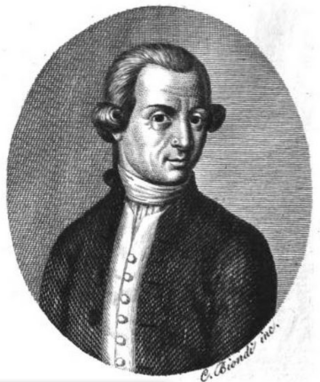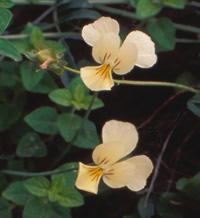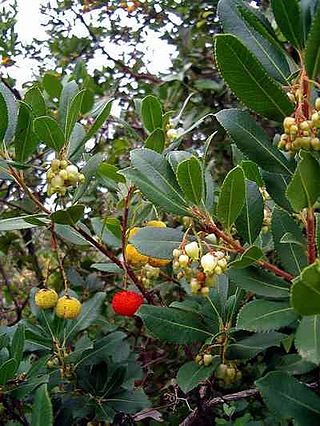
Leopardus is a genus comprising eight species of small cats native to the Americas. This genus is considered the oldest branch of a genetic lineage of small cats in the Americas whose common ancestor crossed the Bering land bridge from Asia to North America in the late Miocene.

Pleurotus eryngii is an edible mushroom native to Mediterranean regions of Europe, the Middle East, and North Africa, but also grown in many parts of Asia.

The European wildcat is a small wildcat species native to continental Europe, Scotland, Turkey and the Caucasus. It inhabits forests from the Iberian Peninsula, Italy, Central and Eastern Europe to the Caucasus. Its fur is brownish to grey with stripes on the forehead and on the sides and has a bushy tail with a black tip. It reaches a head-to-body length of up to 65 cm (26 in) with a 34.5 cm (13.6 in) long tail, and weighs up to 7.5 kg (17 lb).

Calendula maritima, known as the sea marigold and trailing calendula, is a very rare species from the family of Asteraceae. Some scientists regarded it as Calendula suffruticosa subspecies maritima.

Hieracium lucidum, or Sicilian sparviere, is a flowering plant in the family Asteraceae. It is very similar to Hieracium cophanense. Hieracium lucidum is a perennial herb that prefers the northern slopes of chalky seaside cliffs exposed to wet winds, including sites rich in nitrates from sea bird droppings. Unlike most other hawkweeds, this species reproduces only from seeds.

Bupleurum dianthifolium is a species of flowering plant in the family Apiaceae. It is endemic to Italy. Its natural habitat is Mediterranean-type shrubby vegetation. It is threatened by habitat loss.

Bupleurum elatum is a species of flowering plant in the family Apiaceae. It is endemic to Italy. Its natural habitat is Mediterranean-type shrubby vegetation.
Marlothiella gummifera is a species of flowering plant in the family Apiaceae, and the only species in the monotypic genus Marlothiella. It is endemic to Namibia, where its natural habitats are rocky areas and cold desert. It is also the only genus in the tribe Marlothielleae, of the subfamily Apioideae.

Vincenzo Petagna was an Italian biologist, physician and entomologist. He was appointed as director of the small botanical garden pertaining to the Monastery of Santa Maria di Monte Oliveto in central Naples. He was also the teacher of Antonio Savaresi. The plant Petagnaea gussonei has been named after him.

Viola ucriana is a species of plant in the Violaceae family. It is a violet that is endemic to Sicily in Italy, where its known in Italian as Viola di Ucria.

Zelkova sicula is a species of Zelkova in the family Ulmaceae, endemic to Sicily.

Graphosoma italicum is a species of shield bug in the family Pentatomidae. It is also known as the Striped bug and Minstrel bug.

The flora of Italy is all the plant life present in the territory of the Italian Republic. The flora of Italy was traditionally estimated to comprise about 5,500 vascular plant species. However, as of 2019, 7,672 species are recorded in the second edition of the flora of Italy and in its digital archives Digital flora of Italy. In particular, 7,031 are autochthonous and 641 are non native species widely naturalized since more than three decades. Additionally, further 468 exotic species have been recorded as adventitious or naturalized in more recent times.

Cistus monspeliensis is a species of rockrose known by the common name Montpellier cistus. It is native to southern Europe and northern Africa, in the Mediterranean forests, woodlands, and scrub ecosystems of matorral—maquis shrublands.

Simethis is a genus of plants in the family Asphodelaceae, subfamily Hemerocallidoideae. It contains only one known species, Simethis mattiazzii, commonly called the Kerry lily.

Pleurotus nebrodensis, commonly known as funcia di basilicu "fungus of Basil" or carduncieddu di macchia "macchia carduncieddu(?)", is a fungus that was declared by the IUCN as critically endangered in 2006. This fungus only grows on limestone in northern Sicily in association with Cachrys ferulacea. The characteristics of the mushroom are its creamy white to yellow colour, its diameter of between 5 and 20 centimeters, its extremely angled gills, and the breaking apart of the cap surface at maturity.

Rhodostrophia calabra is a moth of the family Geometridae first described by Vincenzo Petagna in 1786. It is found from the Iberian Peninsula and a small isolated population in Morocco, through southern France, the western and southern Alps, Italy, the eastern coast of the Adriatic Sea to the southern parts of the Balkan Peninsula. In central Europe it is only found as an isolated population in central France and Rheinland-Pfalz. It is not found on the islands in the Mediterranean Sea. In the Balkans there is an isolated population in the border region of northern Bulgaria and Serbia. Furthermore, it is present on the eastern shores of the Black Sea in Turkey and in the Caucasus.

Helosciadium nodiflorum, fool's watercress, is a flowering plant found in ditches or streams, as well as fresh and brackish-water wetlands native to western Europe. It is not poisonous to humans but it could be easily confused with the allegedly poisonous lesser water parsnip.

Giovanni Gussone was an Italian academic and botanist, remembered for his work in plant taxonomy and in particular his research in Sicilian flora.



















